Journal of Vision (2007) 7(8):1, 1-12
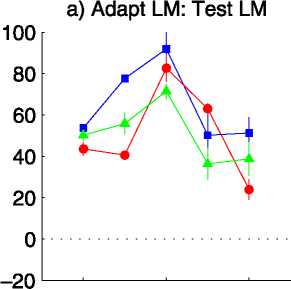
Schofield, Ledgeway, & Hutchinson
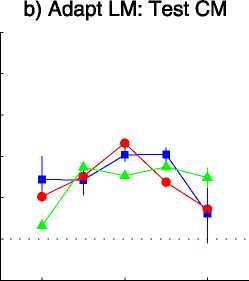
c) Adapt LM: Test OM
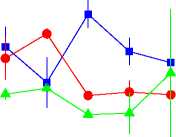
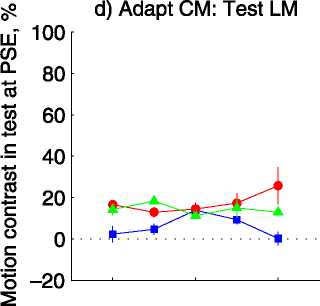
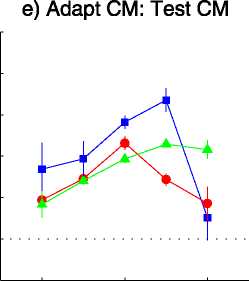
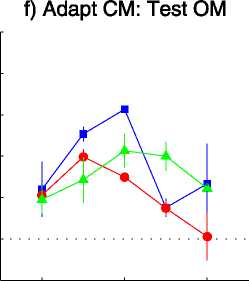
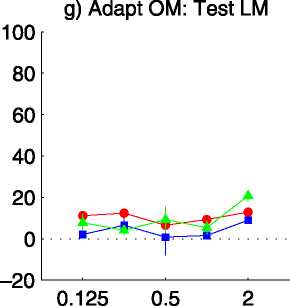
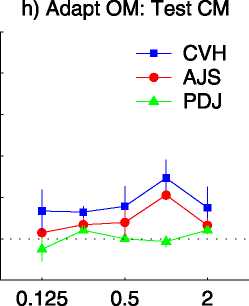
Test spatial frequency (c∕deg)
i) Adapt OM: Test OM
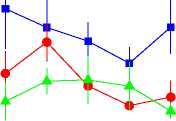
0.125 0.5 2
Figure 3. Adaptation results. The motion contrast required to null any aftereffect. (a-c) Adaptation to LM; (d-f) adaptation to CM; (h-j)
adaptation to OM. Symbols: circles, squares, and triangles represent data for observers A.J.S., C.V.H., and P.D.J., respectively. Dotted
lines show position of zero aftereffect. Error bars are as described in Figure 1.
CM, and, OM adapters are shown on the top, middle, and
bottom rows, respectively. Within-cue adaptation is
shown on the leading diagonal. Each plot shows the PSE
at the adaptation frequency (0.5 c/deg) and test frequen-
cies of up to 2 octaves on either side of this. The strength
of the aftereffect is given as the motion contrast at the
PSE. Values 90% indicate that the observer required extra
signal in the same direction as the adaptation cue (less in
the opposite direction) to perceive a stationary stimulus
and that their aftereffect was therefore in the direction
opposite the adaptation motion. We confirm that adapting
to the carrier alone produced no significant aftereffect for
any test cue (data not shown).
Adaptation to LM produced large shifts in PSE for LM
tests (Figure 3a, LM:LM). The aftereffect was very strong
at the adaptation frequency (motion contrast at PSE
[CPSE] , 80%). The effect was tuned, reducing to around
40% when the spatial frequency of the adaptation and test
patterns differed by 2 octaves. Adaptation to LM induced
a considerably weaker but nonetheless significant shift in
PSE (CPSE , 40%) for CM test patterns (Figure 3b, LM:
CM). This aftereffect was broadly tuned for spatial
More intriguing information
1. The name is absent2. Spousal Labor Market Effects from Government Health Insurance: Evidence from a Veterans Affairs Expansion
3. Improvements in medical care and technology and reductions in traffic-related fatalities in Great Britain
4. The name is absent
5. Handling the measurement error problem by means of panel data: Moment methods applied on firm data
6. Migration and Technological Change in Rural Households: Complements or Substitutes?
7. A parametric approach to the estimation of cointegration vectors in panel data
8. The name is absent
9. Does Presenting Patients’ BMI Increase Documentation of Obesity?
10. The name is absent